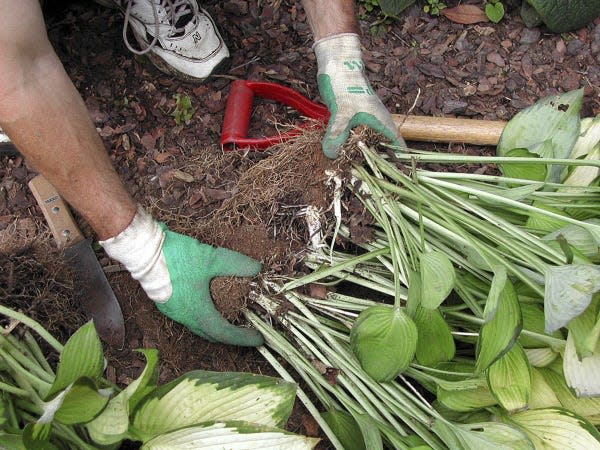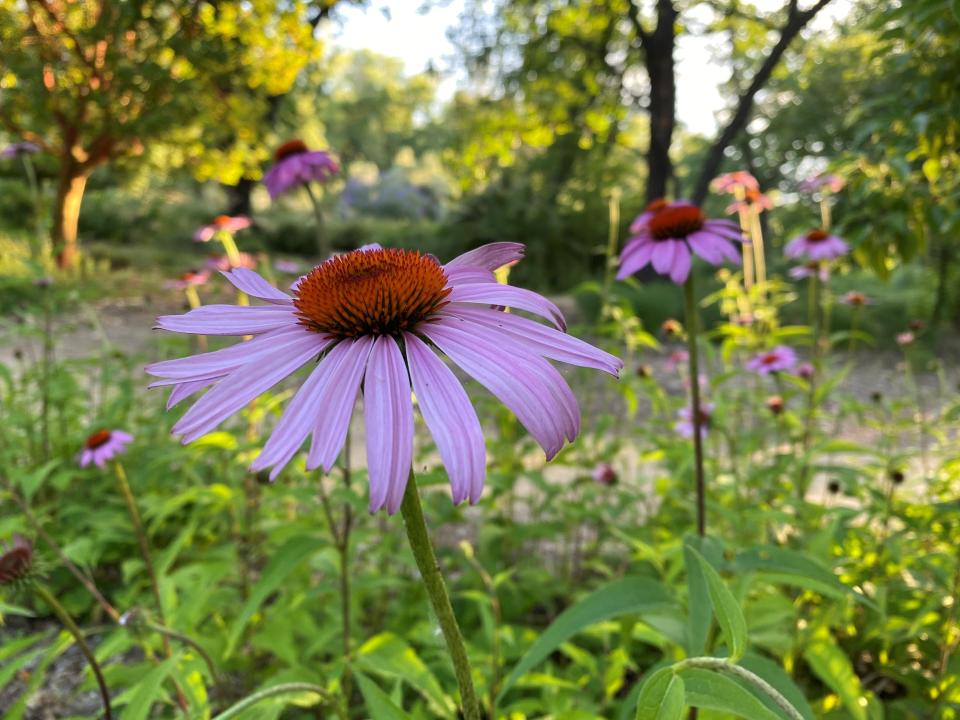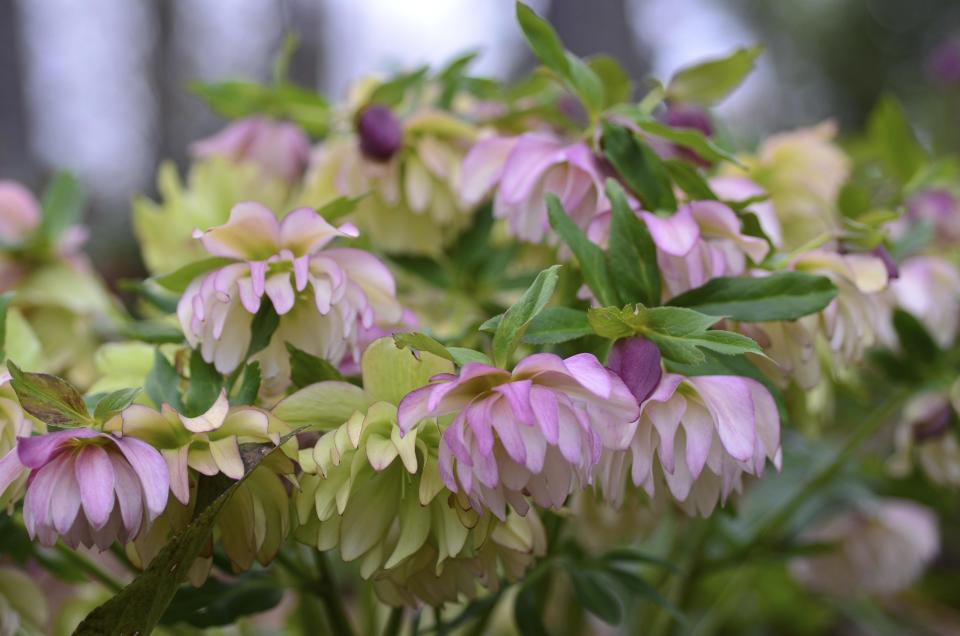September is the best time to divide perennials. Follow these tips

Most of my favorite plants are herbaceous perennials. I love trees and shrubs, and could not live without my short-lived annual flowers. But the variety of plants that excite and dazzle me for nearly 10 months of the year in Greater Columbus are all flowering perennials.
From hellebores and sedums that pop their first green shoots through snow cover some years, to the cannas and daylilies that thrive in the heat of summer, to the asters and chrysanthemums that flower in fall, herbaceous perennial plants can be found in every area of my home landscape.
One of the benefits of perennial plants is that they regrow each year without replanting or the need for much maintenance. Many herbaceous perennials grow in size from one season to the next, and can be divided to provide additional plants. And the best time of the year to divide many perennials is September.
More from Mike Hogan: Hoping for a healthy, green lawn next spring? Start preparing your yard now

Why divide perennials?
By dividing perennials, a gardener can control a plant’s size, rejuvenate plant growth, and increase the number of additional plants that can incorporated into the home landscape or shared with other gardeners. Signs that a perennial needs to be divided include smaller-sized flowers than normal; a hole or dead space in the crown or center of the plant; less vigorous growth; and plants spreading beyond their intended space in the garden.
For gardeners on a budget or in need of additional plants for additional locations in the landscape, dividing perennials can be an inexpensive source of new plants. Reducing the size of existing perennials will provide more space in the garden for roots to grow and absorb water and nutrients. Reducing the size of plants will reduce crowding and allow for greater airflow, reducing the incidence of leaf diseases.
When should plants be divided?
As a general rule, perennials should be divided when they are not in bloom, allowing all of the plant’s energy to go to root and leaf growth. September is the perfect time to divide spring- and summer-blooming perennials. Plants should be divided a minimum of six to eight weeks prior to the ground freezing to allow for development of extensive root systems to store energy needed for growth next spring and summer.
Fall-blooming plants such as asters, chrysanthemums and others should be divided in early spring as new growth is emerging.
Preparing to divide
Plants that are to be divided should be well-watered a day or two before they will be divided. Before digging the plant to be divided, prepare the area where you plan to plant the new divisions.
Make sure that the new planting area is well-drained with adequate fertility and a soil pH between 6 and 7. Consider adding organic matter such as compost or peat moss to the planting holes for the new divisions.

Before digging the plant you wish to divide, cut back stems and foliage to 6 inches from the ground. Use a spading fork or shovel to dig deep on all four sides of the plant, and pry underneath the roots of the plant and lift the entire soil clump.
Ask the expert: How do I get rid of hornets' nest without getting stung?
Different types of root systems
Different perennial plants have different types of root systems, and each root system should be treated differently when dividing plants. Types of root systems include the following:
Spreading root system: Plants such as coreopsis, aster, beebalm, lamb's ear, coneflower and others have roots that are intertwined and may be matted. These roots should be pulled apart by hand or cut into sections with a sharp plant knife. Each division should contain three to five vigorous shoots. Discard small, weak, woody divisions and the center of the plant if it is dead or weaker than the perimeter.
Clumping root system: Plants with a clumping root system include daylily, astilbe, hosta and most ornamental grasses. This type of root system originates from a central clump with multiple growing points. These plants are best divided by cutting through the crown with a sharp plant knife.
Rhizomes: Plants such as bearded iris have rhizomes, which are actually stems that grow horizontally at or above ground level. To divide plants with rhizome root systems, cut the rhizome with a sharp plant knife. Each division should contain a few inches of rhizome and a section of leaves.
Tubers: Dahlias and canna lilies are examples of plants with tuberous roots. In Greater Columbus, perennials with tuberous roots must be dug up in fall and stored in a frost-free area until spring. A sharp plant knife should be used to cut the tubers into sections containing at least one bud.

Never divide these plants
Certain plants do not respond well to the root disturbance associated with dividing plants and should not be divided. Perennials that should not be divided include clematis, lupine, poppy, Russian sage, balloon flower, false indigo, butterfly weed, columbine, and baby’s breath.
Mike Hogan is an Extension educator, Agriculture and Natural Resources and associate professor with Ohio State University Extension. hogan.1@osu.edu
This article originally appeared on The Columbus Dispatch: Here's how to divide your perennial plants

